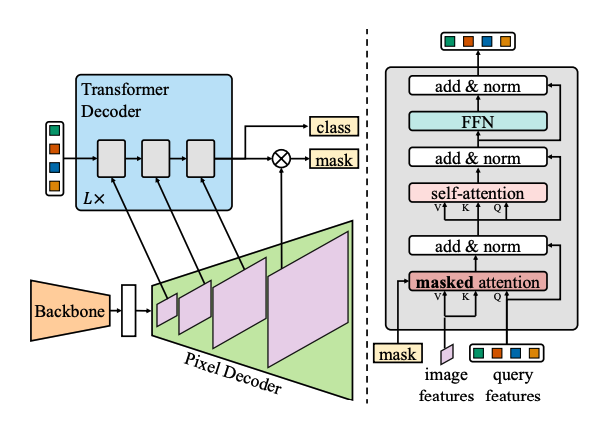🚀 Mask2Former
The Mask2Former model is trained on Cityscapes instance segmentation (base - IN21k version, Swin backbone). It offers a unified approach to instance, semantic, and panoptic segmentation, providing high - performance solutions for image segmentation tasks.
🚀 Quick Start
The Mask2Former model is trained on Cityscapes instance segmentation (base - IN21k version, Swin backbone). It was introduced in the paper Masked - attention Mask Transformer for Universal Image Segmentation and first released in this repository.
Disclaimer: The team releasing Mask2Former did not write a model card for this model so this model card has been written by the Hugging Face team.
✨ Features
- Unified Segmentation Paradigm: Mask2Former addresses instance, semantic, and panoptic segmentation using the same approach by predicting a set of masks and corresponding labels.
- Performance and Efficiency: It outperforms the previous SOTA, MaskFormer, both in terms of performance and efficiency. It achieves this by replacing the pixel decoder with a more advanced multi - scale deformable attention Transformer, adopting a Transformer decoder with masked attention, and improving training efficiency by calculating the loss on subsampled points instead of whole masks.

📚 Documentation
Intended uses & limitations
You can use this particular checkpoint for instance segmentation. See the model hub to look for other fine - tuned versions on a task that interests you.
How to use
Here is how to use this model:
import requests
import torch
from PIL import Image
from transformers import AutoImageProcessor, Mask2FormerForUniversalSegmentation
processor = AutoImageProcessor.from_pretrained("facebook/mask2former-swin-base-IN21k-cityscapes-instance")
model = Mask2FormerForUniversalSegmentation.from_pretrained("facebook/mask2former-swin-base-IN21k-cityscapes-instance")
url = "http://images.cocodataset.org/val2017/000000039769.jpg"
image = Image.open(requests.get(url, stream=True).raw)
inputs = processor(images=image, return_tensors="pt")
with torch.no_grad():
outputs = model(**inputs)
class_queries_logits = outputs.class_queries_logits
masks_queries_logits = outputs.masks_queries_logits
result = processor.post_process_instance_segmentation(outputs, target_sizes=[image.size[::-1]])[0]
predicted_instance_map = result["segmentation"]
For more code examples, we refer to the documentation.
📄 License
The license for this model is other.
| Property |
Details |
| Tags |
vision, image - segmentation |
| Datasets |
coco |
| Widget Examples |
- src: http://images.cocodataset.org/val2017/000000039769.jpg, example_title: Cats
- src: http://images.cocodataset.org/val2017/000000039770.jpg, example_title: Castle
|

